Raymond Loewy
| Raymond Loewy | |
|---|---|
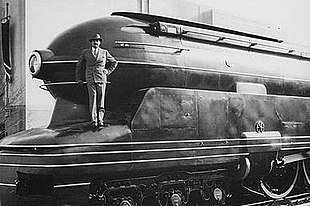 | |
| Born |
November 5, 1893 Paris, France |
| Died |
July 14, 1986 (aged 92) Monte Carlo, Monaco |
| Resting place | Rochefort-en-Yvelines Cemetery, Rambouillet, France |
| Citizenship | France, United States |
| Education | University of Paris |
| Occupation | industrial designer |
| Years active | 1909–1980 |
| Notable work |
|
| Spouse(s) |
Jean Thompson Bienfait[1] (m. 1931–1945; divorced) Viola Erickson (m. 1948–1986; his death) |
| Children | 1 |
| Website | Raymondloewy.com |
Raymond Loewy (/ˈloʊiː/ LOH-ee, French pronunciation: [ʁɛmɔ̃ løui] November 5, 1893 – July 14, 1986) was a Franco–American industrial designer who achieved fame for the magnitude of his design efforts across a variety of industries. He was recognized for this by Time magazine and featured on its cover on October 31, 1949.[2]
He spent most of his professional career in the United States, becoming a naturalized citizen in 1938. Among his designs were the Shell, Exxon, TWA and the former BP logos, the Greyhound Scenicruiser bus, Coca-Cola vending machines, the Lucky Strike package, Coldspot refrigerators, the Studebaker Avanti and Champion, and the Air Force One livery. He was involved with numerous railroad designs, including the Pennsylvania Railroad GG1 and S-1 locomotives, the color scheme and Eagle motif for the first streamliners of the Missouri Pacific Railroad and a number of lesser known color scheme and car interior designs for other railroads. His career spanned seven decades.
The press referred to Raymond Loewy as The Man Who Shaped America, The Father of Streamlining and The Father of Industrial Design.[3]
Early life
Born in Paris in 1893, Loewy was the son of Maximilian Loewy, a Jewish journalist from Austria, and a French mother, Marie Labalme. Loewy distinguished himself early on with the design of a successful model aircraft, which then won the Gordon Bennett Cup for model airplanes in 1908.[4] By the following year, he had commercial sales of the plane, named the Ayrel.
Loewy served in the French army during World War I (1914–1918), attaining the rank of captain. He was wounded in combat and received the Croix de guerre. After the war he moved to New York, where he arrived in September 1919.
Career
Early work
In Loewy's early years in the United States, he lived in New York and found work as a window designer for department stores, including Macy's, Wanamaker's and Saks in addition to working as a fashion illustrator for Vogue and Harper's Bazaar. In 1929 he received his first industrial-design commission to contemporize the appearance of a duplicating machine by Gestetner. Further commissions followed, including work for Westinghouse, the Hupp Motor Company (the Hupmobile styling), and styling the Coldspot refrigerator[5] for Sears-Roebuck. It was this product that established his reputation as an industrial designer. He opened a London office in the mid-1930s that continues to operate.[6]
Pennsylvania Railroad
In 1937, Loewy established a relationship with the Pennsylvania Railroad, and his most notable designs for the firm involved some of their passenger locomotives. He designed a streamlined shroud for K4s Pacific #3768 to haul the newly redesigned 1938 Broadway Limited. He followed by styling the experimental S1 locomotive, as well as the T1 class.
Later, at the Pennsylvania Railroad's request, he restyled Baldwin's diesels with a distinctive "sharknose" reminiscent of the T1. While he did not design the famous GG1 electric locomotive, he improved its appearance with welded rather than riveted construction, and he added a pinstripe paint scheme to highlight its smooth contours.
In addition to locomotive design, Loewy's studios provided many designs for the Pennsylvania Railroad, including stations, passenger-car interiors, and advertising materials. By 1949, Loewy employed 143 designers, architects, and draftsmen. His business partners were A. Baker Barnhart, William Snaith, and John Breen.[7]
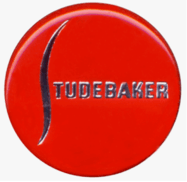
Studebaker
Loewy had a long and fruitful relationship with American car maker Studebaker. Studebaker first retained Loewy and Associates and Helen Dryden as design consultants in 1936[8]:[p.247] and in 1939 Loewy began work with the principal designer Virgil Exner.[8][9] Their designs first began appearing with the late-1930s Studebakers. Loewy also designed a new logo which replaced the "turning wheel" which had been the trademark since 1912.[8]
During World War II, American government restrictions on in-house design departments at Ford, General Motors, and Chrysler prevented official work on civilian automobiles. Because Loewy's firm was independent of the fourth-largest automobile producer in America, no such restrictions applied. This permitted Studebaker to launch the first all-new postwar automobile in 1947, two years ahead of the "Big Three." His team developed an advanced design featuring flush-front fenders and clean rearward lines. The Loewy staff, headed by Exner, also created the Starlight body which featured a rear-window system wrapping 180° around the rear seat.

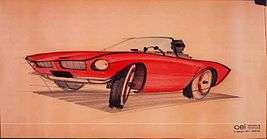
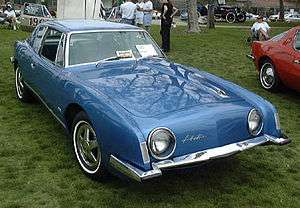
In addition to the iconic bullet-nosed Studebakers of 1950 and 1951, the team created the 1953 Studebaker line, highlighted by the Starliner and Starlight coupes. (Publicly credited to Loewy, they were actually the work of Robert Bourke.[10])
The Starlight has consistently ranked as one of the best-designed cars of the 1950s in lists compiled since by Collectible Automobile, Car and Driver, and Motor Trend. The '53 Starliner, recognized today as "one of the most beautiful cars ever made",[11] was radical in appearance, as radical in its way as the 1934 Airflow. However, it was beset by production problems.[11]
To brand the new line, Loewy also contemporized Studebaker's logo again by applying the "Lazy S" element. His final commission of the 1950s for Studebaker was the transformation of the Starlight and Starliner coupes into the Hawk series for the 1956 model year. The photo to the right actually shows a Starliner hardtop which does not have the "C" pillar.
In the spring of 1961, Studebaker's new president, Sherwood Egbert, recalled Loewy to design the Avanti. Egbert hired him to help energize Studebaker's soon-to-be-released line of 1963 passenger cars to attract younger buyers.
Despite the short 40-day schedule allowed to produce a finished design and scale model, Loewy agreed to take the job. He recruited a team consisting of experienced designers, including former Loewy employees John Ebstein; Bob Andrews; and Tom Kellogg, a young student from the Art Center College of Design in Pasadena. The team worked in a house leased for the purpose in Palm Springs, California. (Loewy also had a home in Palm Springs which he designed himself.[12]) Each team member had a role. Andrews and Kellogg handled sketching, Ebstein oversaw the project, and Loewy was the creative director and offered advice.
NASA
Raymond Loewy worked for NASA from 1967 to 1973.[13] Loewy was employed as a Habitability Consultant by NASA when they designed the Skylab space station, launched in 1973.[14] One of NASA's goals in hiring him was to improve the psychology, safety, and comfort of manned spacecraft.[13]
Personal life, death and legacy
Loewy retired at the age of 87 in 1980 and returned to his native France.
Loewy died in his Monte Carlo residence in 1986. He was raised in Catholic faith and upon his passing, was buried in the cemetery of a Roman Catholic church[15] of Rochefort-en-Yvelines in France,[16] a village located some 40 km southwest of Paris, where he owned the castle de la Cense. He was survived by his wife Viola, and their daughter Laurence.
Foundation
In 1992 Viola and Laurence Loewy, with the support of British American Tobacco, established the Raymond Loewy Foundation in Hamburg, Germany. The foundation was established to promote the discipline of industrial design internationally and preserve the memory of Raymond Loewy. An annual award of €50,000 is granted to outstanding designers in recognition of their lifetime achievements. Notable grantees include Karl Lagerfeld, Philippe Starck and Dieter Rams.
Design Center and Museum
In 1998, Laurence Loewy established Loewy Design in Atlanta, Georgia to manage her father's continued interests in the United States. Laurence died of natural causes October 15, 2008 and is survived by her husband David Hagerman and son Jacque Loewy. David Hagerman, CEO of Loewy Design and Representative for the Estate of Raymond Loewy, manages daily activities and is directly involved in museum planning. The Loewy family's collection of archives are currently being restored, cataloged and photographed for future events and fundraisers. Fundraising efforts have begun to build the Raymond Loewy Museum of Industrial Design, a 501c3 non profit, originally envisioned by Laurence Loewy.[17]
Google doodle
On November 5, 2013, Loewy was honored with a Google Doodle depicting a streamlined locomotive bearing a resemblance to the K4s Pacific #3768 shroud design, using the wheels of the train to form the word Google.[18]
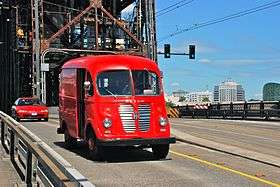
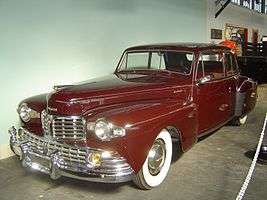
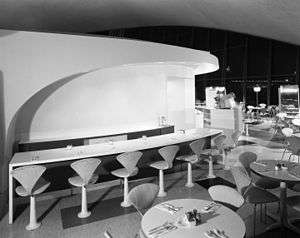
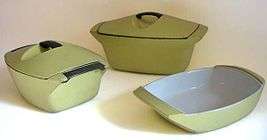
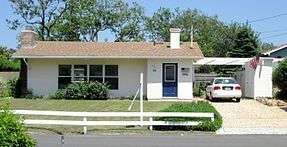
_crop.jpg)
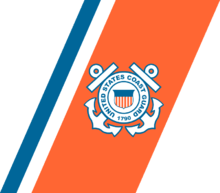

Loewy designs
1900s
- Ayrel aircraft, 1909
1920s
- Gestetner mimeograph duplicating machine shell, 1929
1930s
- Boeing 307 – Interior of the Boeing 307 (Stratoliner) owned by Howard Hughes[19]
- International Harvester Farmall tractor letter series, 1939–1954
- International Harvester Metro, light & medium duty vans and trucks, 1938
- Pennsylvania Railroad:
- PRR K4s steam locomotive
- PRR S1 steam locomotive
- PRR T1 steam locomotive
- PRR GG1 electric locomotive
- Sears products, including 1935 Sears Coldspot refrigerator
- Sunbeam tombstone-shaped electric toaster.
1940s
- Electrolux L300 refrigerator, 1940
- Missouri Pacific Railroad Eagle streamliner colors and car interiors, 1940
- Harley-Davidson components of the 1941 74FL Knucklehead
- Schick electric razor, 1941[7]
- Lucky Strike, white package, 1942
- Electrolux floor polisher model B6, 1944
- Fairbanks-Morse "Erie-built" (1945) and "C-liner" (1950) models, Model H-10-44 (1944) and H-20-44 (1947), and early Model H-12-44 (1950), H-12-46 (1950), H-15-44 (1947), H-16-44 (1950), and H-16-66 (1950) diesel locomotives
- Hallicrafters Model S-38 shortwave radio, 1946[20]
- Loewy Lincoln Continental, 1946
- Filben Maestro jukebox, 1947
- 1947 Studebaker Champion, 1947
- Baldwin Locomotive Works Model DR-4-4-15 "Sharknose" diesel locomotives, 1949
- IBM 026 keypunch, 1949
- Norfolk and Western Railway Roanoke, Virginia station renovation (now the O. Winston Link Museum), 1949; the building is included in the Norfolk and Western Railway Company Historic District, listed on the National Register of Historic Places in 1999.[21][22]
- Lord & Taylor first branch, Manhasset, New York, 1946
1950s
- Lionel's #497 Coal Loader, 1950
- Greyhound Lines experimental Coach GX-1 (US Patent 2,563,917), precursor to the PD-4501 Scenicruiser, 1951.
- The International Harvester "IH" "Man on a tractor" logo, 1952.
- Peace cigarette packaging, 1952
- Studebaker Commander, 1953
- Northern Pacific Railway, Vista-Dome North Coast Limited (exterior color scheme and interiors), 1954.
- Coca-Cola Redesign of the original contour bottle, eliminating Coca-Cola embossing and adding vivid white Coke/Coca-Cola lettering, designed and introduced first king-size or slenderized bottles, that is, 10, 12, 16 and 26 oz. (1955) Later, in 1960, he designed the first Coke steel can with diamond design.
- Rosenthal Sunburst modern china set 1956.
- Hillman Minx automobile, Series One onward, 1956–1959.
- Sunbeam Alpine automobile, series One onward, 1959–1967.
- Sunbeam Mixmaster Models 10 and 11, 1950-1956.
- Scott-Atwater Royal Scott outboard motor made by McCulloch, 1957
- 500-Series of Cockshutt tractors, 1958
- Le Creuset Coquelle, 1958
- Leisurama homes, 1959
- Dorsett recreational boats, 1959
- TWA Twin Globes Logo, 1959[23]
1960s
- Air Force One's distinctive blue, white and chrome livery, 1962. Variations on Loewy's original design are today flown by most of the U.S. Air Force's fleet of VIP aircraft, including the military "VC" models of 747s, 757s, 737s, and Gulfstreams.(A similar livery was applied in 2006 to Union Pacific diesel locomotive #4141 to honor former president George H. W. Bush)
- Union News restaurants, coffee shop, at the TWA Flight Center, Idlewild, circa 1962[24]
- Studebaker Avanti, 1963
- United States Coast Guard "racing stripe" Service Mark, 1964
- Five cents John Kennedy postage stamp, 1964
- DF-2000 line of modern furniture, 1965 [25]
- Exxon logo, 1966 (introduced in 1972)[26]
- New York City Transit Authority R40 car, whose slanted-front end design had to be retrofitted with guide and guard rails, along with pantograph gates due to safety concerns, 1967.
- Lucky Strike holiday carton, box art, Christmas 1967
- Chubb logo, 1968
- Elna's Lotus compact sewing machine; in the Design Collection of New York's Museum of Modern Art (MOMA), 1968.
- SPAR logo, 1968[27]
1970s
- United States Postal Service eagle logo, 1970
- Shell logo, 1971
- Air France Concorde interior, 1975
- NASA's Skylab space station, first interior design standards for space travel including a porthole to allow a view of earth from space, interior designs and color schemes, a private area for each crew member to relax and sleep, food table and trays, coveralls, garment storage modules, designs for waste management
- Norfolk Scope, hallmark and logo[28][29]
Work in years or models unknown
- Frigidaire refrigerators, ranges, and freezers
- Panama Pacific Line: Loewy designed the interiors for a trio of American-built cargo liners named the SS Ancon, SS Cristobal and SS Panama.
- Wahl-Eversharp Symphony fountain pen.
- Dorsett "Catalina", a popular early fiberglass pleasure boat.
Published books
See also
- Norman Bel Geddes
- Streamline Moderne, design era
References
Notes
- ↑ Hagley Digital Images Archived 2013-11-05 at Archive.is
- ↑ Loewy on the cover of Time (October 31, 1949)
- ↑ "FastFacts" on Raymondloewy.com
- ↑ Loewy, Raylonf (2002). Never Leave Well Enough Alone. Johns Hopkins University Press. p. 28. ISBN 0-8018-7211-1.
- ↑ Coldspot Refrigerator
- ↑ Loewy Group marketing agency Archived 2007-11-24 at the Wayback Machine.
- 1 2 Staff (October 31, 1949) "Up from the Egg", Time
- 1 2 3 Hendry, Maurice M. Studebaker: One can do a lot of remembering in South Bend. New Albany: Automobile Quarterly. pp. 228–275. Vol X, 3rd Q, 1972.
- ↑ Setright, L.J.K., "Loewy: When styling became industrial design", in Northey, Tom, ed. World of Automobiles (London: Orbis, 1974), Volume 11, p. 1211.
- ↑ Automotive Design Oral History – "Reminiscences of Robert E. Bourke"
- 1 2 Ludvigsen, p. 2227
- ↑ Bloch, John, director and producer: Agronsky, Martin, host, (February 23, 1958). "Look Here. Raymond Loewy". NBC Television Presents, LCCN 96-507681
- 1 2 Novak, Matt (October 13, 2014) "Raymond Loewy's NASA Designs Are The Space Future That Never Was" Paleofuture
- ↑ Torchinsky, Jason (May 13, 2014) "Why Skylab Was America's First And Best Home In Space" Jalopnik
- ↑ L’église de Rochefort et son cimetière Archived 2013-12-03 at the Wayback Machine. on the official website of Rochefort-en-Yvelines.
- ↑ "Raymond Loewy (1893–1986)" (in French). Mairie of Rochefort-en-Yvelines. Archived from the original on 22 December 2015.
- ↑ "Museum SIte Are Being Studied". Loewy Museum website. Archived from the original on 28 September 2013. Retrieved 26 February 2013.
- ↑ "Google Doodle celebrates the 'father of industrial design' Raymond Loewy". IGN. November 5, 2013. Retrieved November 4, 2013.
- ↑ "Hughes' Stratoliner". Planeboats.com. Retrieved 2009-10-25.
- ↑ "Hallicrafters SX-42 shortwave radio made 1946 - 1947". Arsmachina.com. Archived from the original on 2005-12-31. Retrieved 2013-11-05.
- ↑ National Park Service (2010-07-09). "National Register Information System". National Register of Historic Places. National Park Service.
- ↑ Harnesberger, Douglas J. and Kraus, Nancy (July 1998). "National Register of Historic Places Inventory/Nomination: Norfolk and Western Railway Company Historic District" (PDF). Virginia Department of Historic Resources. Archived from the original (PDF) on 2012-09-27.
- ↑ "Designed to Travel; Curating Relics of T.W.A. As It Prepares for Departure". The New York Times. June 7, 2001.
- ↑ Staff. "Union News restaurants, TWA, Idlewild. Lisbon Lounge". United States Library of Congress. Retrieved 1 November 2014.
- ↑ Valet 2000/50 Dressing Cabinet
- ↑ American Treasures of the Library of Congress, Design drawing for Exxon logo by Raymond Loewy
- ↑ "SPAR". Raymond Loewy Foundation. Retrieved 2009-10-25.
- ↑ Staff (July 2009). "Celebrate America this July with Gary Kollberg's Exhibit at the Farmington Library". Farmington, Connecticut: Farmington Library of Art.
- ↑ Wilson, Patrick (March 23, 2009). "What's in a name? Scope Arena, Norfolk". The Virginian Pilot.
Further reading
- Bayley, Stephen. The Lucky Strike Packet (Design Classics Series), Art Books International Ltd (1998) ISBN 3-931317-72-2
- Byars, Mel. "Loewy, Raymond" in American National Biography, American Council of Learned Societies (2000)
- Porter, Glenn. Raymond Loewy Designs for the Consumer Culture, Hagley Museum and Library (2002) ISBN 0-914650-34-3
- Schoenberger, Angela. Raymond Loewy: Pioneer of American Industrial Design, Prestel Publishing (1991) ISBN 3-7913-1449-1
- Trétiack, Phillippe. Raymond Loewy and Streamlined Design, New York: Universe (1999) ISBN 0-7893-0328-0
External links
| Wikiquote has quotations related to: Raymond Loewy |
| Wikimedia Commons has media related to Raymond Loewy. |
- Loewy Group marketing agency – site of original Loewy design firm, now a marketing & design agency subsidiary owned by Writtle Holdings, LTD.
- LoewyMuseum.org – official site of the forthcoming Raymond Loewy Museum & Library
- RaymondLoewy.com – official site website of Raymond Loewy
- RaymondLoewy.org – official site of Loewy Design, LLC
- The Raymond Loewy Foundation
- Raymond Loewy Tribute Site (English/German)
- Raymond Loewy archive (1903–1982) at Hagley Museum and Library. This collection consists of Loewy's personal papers, business records, and materials generated and maintained by Loewy's New York Public Relations Department as well as some of Viola Loewy's personal papers.
- Raymond Loewy Collection of Photographs and Audiovisual Materials (1905–1980) at Hagley Museum and Library. This collection is composed of images of design work Loewy and his firm conducted for corporate American and foreign clients; Loewy's personal photographs; and his speeches and interviews.
- Raymond Loewy miscellany (1936–1995) at Hagley Museum and Library. The collection consists of magazine advertisements, photos and postcard views of Loewy designs, product brochures; and a group of publications by and about Loewy. There is also a small group of artifacts.
- Raymond Loewy at Find a Grave